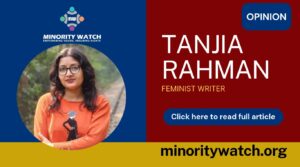Bangladesh’s education system is one of the most diverse, with madrassas (Islamic seminaries) forming a significant part of it. Millions of students study in these institutions, but when compared to the mainstream education system, it’s clear that they are being shortchanged—receiving an education that fails to equip them for real-world challenges.
What Does It Mean to Be an Educational Minority?
Being a minority isn’t just about numbers—it’s about quality, access, and social recognition. Are madrassa students falling behind due to systemic neglect?
Religious education focuses on the afterlife, not practical life skills. While it teaches moral judgment, it does little to develop technical or professional competence. The real purpose of education should be to create skilled, aware citizens—but madrassas are failing in this regard.
The State of Madrassa Education in Bangladesh
Madrassas in Bangladesh are divided into two types: Qawmi (privately run, strictly religious) and Alia (government-regulated, with some secular subjects). Despite their differences, a pressing question remains: Are madrassa students lagging behind mainstream learners? And if so, why?

Educational Minority: Not in Numbers, But in Opportunity
Madrassa students are not a minority in terms of enrollment—millions study under the Bangladesh Madrassa Education Board, with Qawmi madrassas adding even more.
The real issue lies in structural inequality.
- Madrassa students struggle to transition into universities.
- They face discrimination in the job market.
- Their curriculum lacks modern technical and vocational training.
This systemic neglect effectively turns them into an oppressed educational minority.
Social and Economic Barriers
When madrassa graduates try to enter mainstream society, they encounter numerous obstacles:
- No reserved quotas in universities, leading to rejection.
- Employers often disregard their qualifications.
- Outdated curriculum leaves them unprepared for modern jobs.
Reforms and Solutions
Shutting down madrassas isn’t the answer—strong government oversight and modernization are.
- Curriculum Reform: Integrate modern science, technology, and English into madrassa education.
- Special Focus on Qawmi Madrassas: Stricter monitoring and alignment with national education standards.
- Employment Pathways: Ensure madrassa graduates receive vocational training and job placement support.
Conclusion
Madrassa students may not be a numerical minority, but they are systematically marginalized. If Bangladesh truly wants equal educational opportunities, it must integrate madrassa students into mainstream learning. They should be seen not just as religious scholars but as skilled contributors to the nation’s progress. Only then can real equality be achieved.
Author: Liakat Hossain Limon (Limon Fakir)
Date: March 30, 2025
এই আর্টিকেলটি বাংলায় পড়তে চাইলে এখানে ক্লিক করুন
Read more news in this category
[The opinions published in MinorityWatch belong solely to the author]







